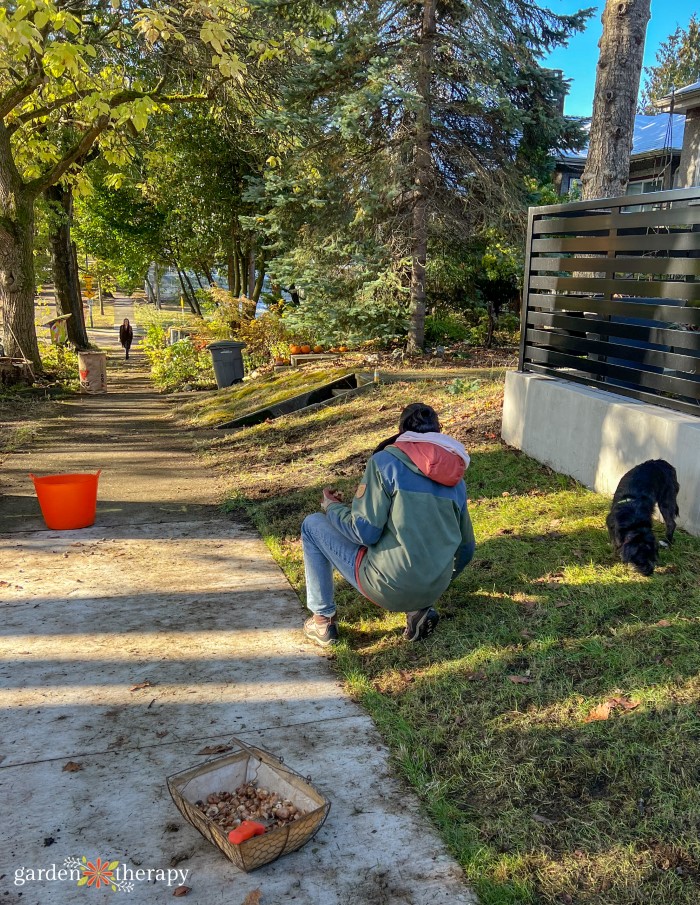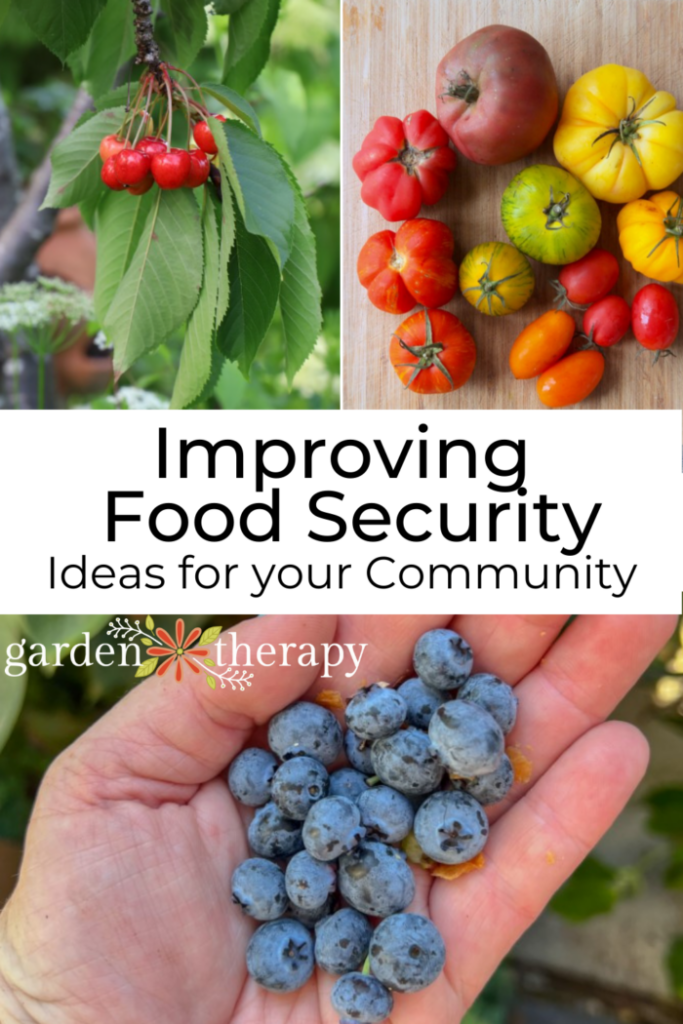Accessing fresh fruit and vegetables is much harder and more expensive than it used to be. So how do we grow food within our immediate neighbourhood? There are many different ways that we can help to improve food security within our communities. Let’s talk about them!
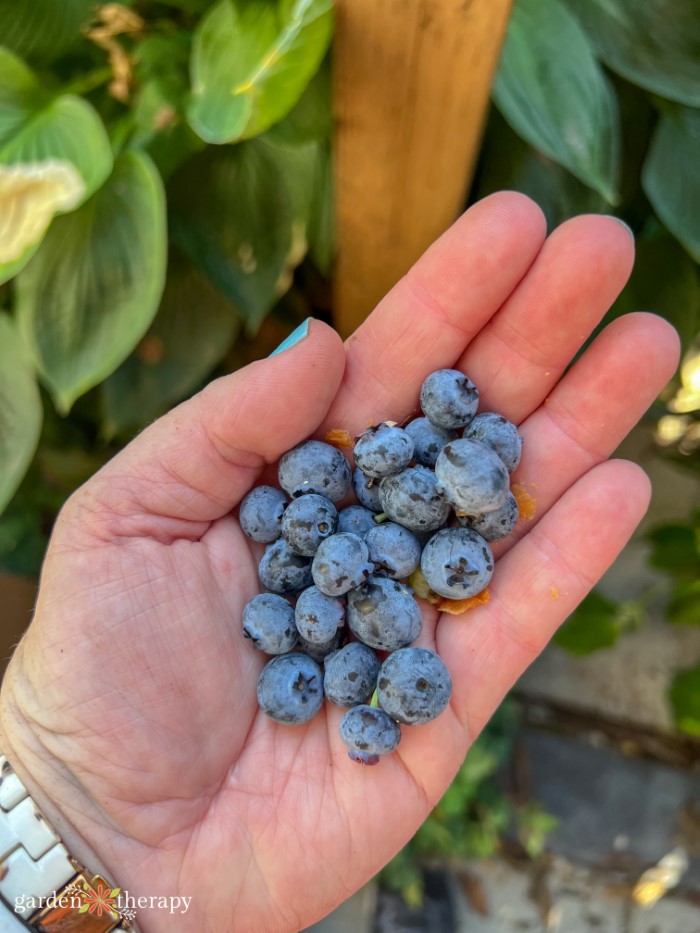
Food security has been on my mind a lot lately. With the rising cost of living, going to the grocery store isn’t what it used to be. Suddenly, I’m looking at a grocery bill that is 15% or more than what it used to be.
When writing The Regenerative Garden, I included a chapter entirely on community. While we may think of gardening as an independent activity, it’s really far from it. Community is a core part of practicing gardening, from sharing ideas online to planning a garden that contributes to the local wildlife.
A garden can mean so much more than just a place to pull weeds and grow vegetables. It can be a place that’s part of a community that supports many different lives.
Like many, I have thoughts and ideas about improving food security for everyone. Food security is how accessible (affordable and within reach) fresh and nutritious food is.
I want to stress that these are ideas, not solutions. Many of these ideas for improving food security have their own challenges, which I will try to discuss. But I simply wanted to begin the discussion so that we can help everyone get better access to fresh food together.
Today, I’ll be talking about…
- Community Food Forests
- Edible Street Trees
- Community Gardens
- Community Sharing
- Community is Key
- More Posts to Read
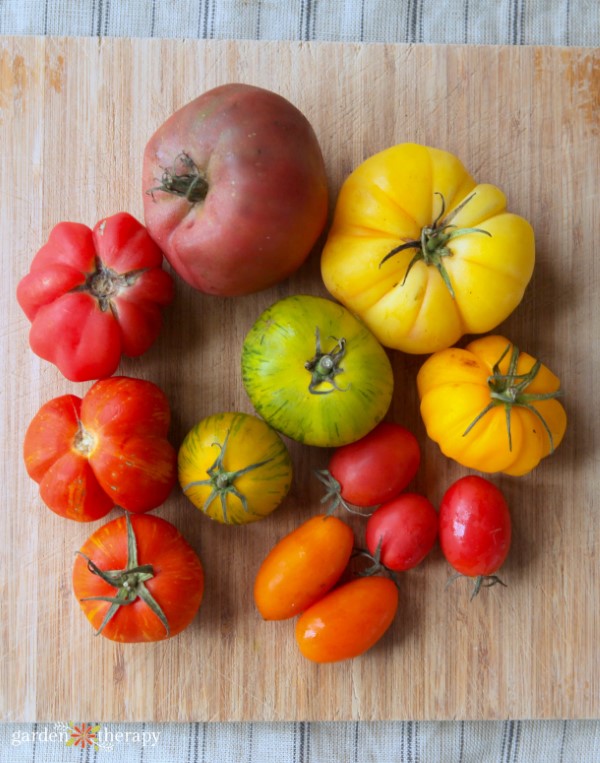
Community Food Forests
Indigenous Peoples have practiced food forests for hundreds of years. They’re a carefully curated selection of plants that mimic a natural forest system while producing the highest amount of food, medicine, and craft materials as possible.
Right in BC, food forests have been re-discovered that were planted and maintained more than 150 years ago by the Ts’msyen and Coast Salish Indigenous peoples. They took forests covered in cedar and hemlock and planted an orchard-like display of shrubs like wild cherry and crab apple.
Not only can we create food forests in our homes but also in public spaces. I have always loved the idea of planting food forests at schools.
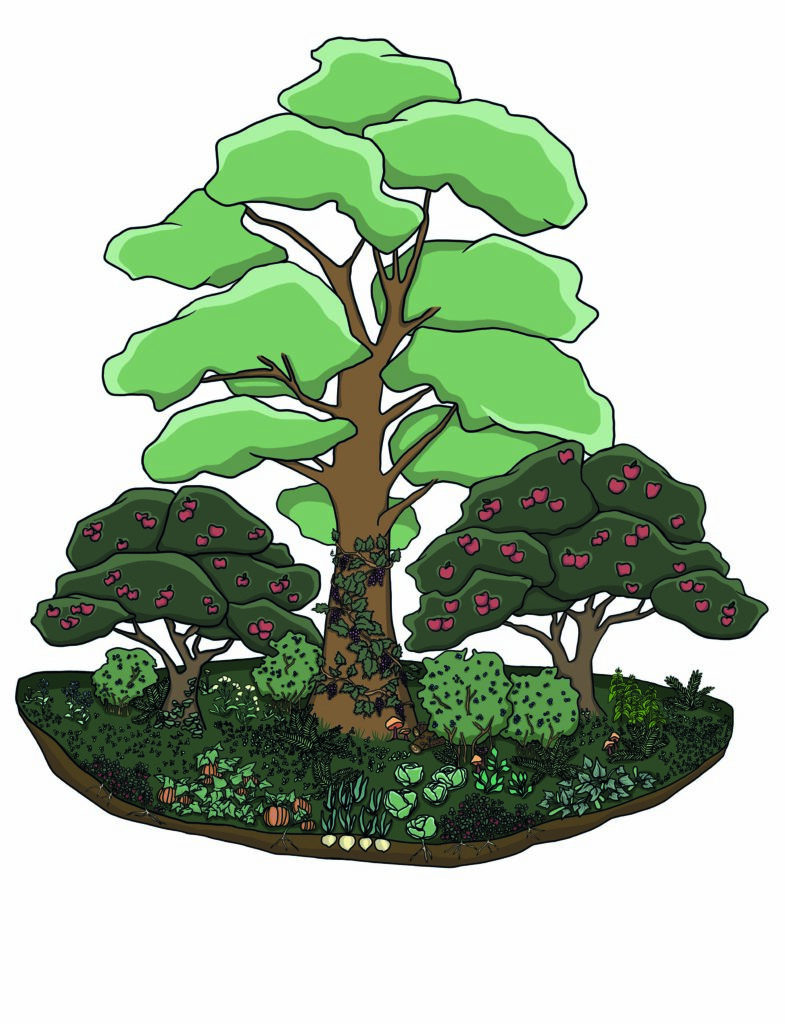
Most schools have traditional raised vegetable gardens where the kids help and learn about growing food. But primary vegetable production occurs in the summer when the kids aren’t there. Food forests, however, perform in all seasons and have a natural succession: as it grows, it performs more.
There’s also less maintenance in the growing season, as most of the primary care, such as pruning, would take place in the spring or fall. The kids can participate and learn plenty about producing food and regenerative gardening practices. Then, the school can also use the food to provide healthy and fresh meals.
There may be local organizations within your community that are already helping to grow food forests in local spaces. In my area, the Vancouver Urban Food Forest Foundation is utilizing these indigenous practices to “spread the word about food justice as a tool for systematic change.”
Lori Synder, our Garden Therapy Herbalist Mentor, is one of the co-creators of the organization.
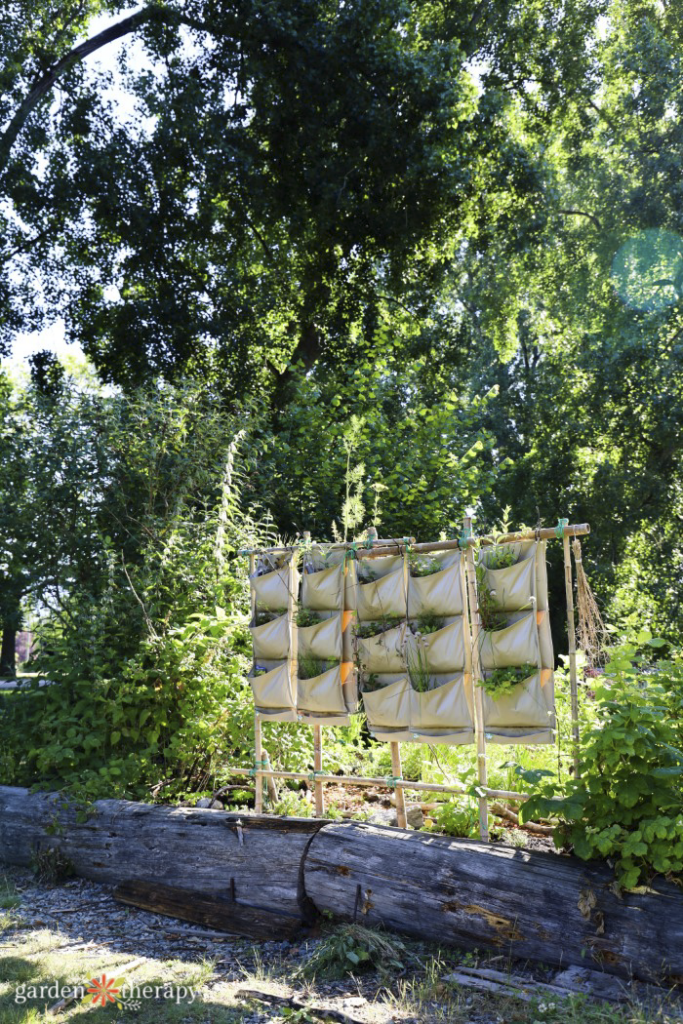
Edible Street Trees
So many trees are planted every year in cities to beautify their boulevards. Why couldn’t these street trees also produce food? This would create food for plenty of people and also wildlife.
Unfortunately, this seemingly simple idea actually has tons of issues and isn’t quite as straightforward as replacing boulevard trees with edible ones.
Fruit trees can become extremely messy if there’s no one there to harvest the fruit. Who would be responsible for harvesting these trees and cleaning up the mess? New infrastructure would need to be put in place to take care of it, leading to more $$ being spent.
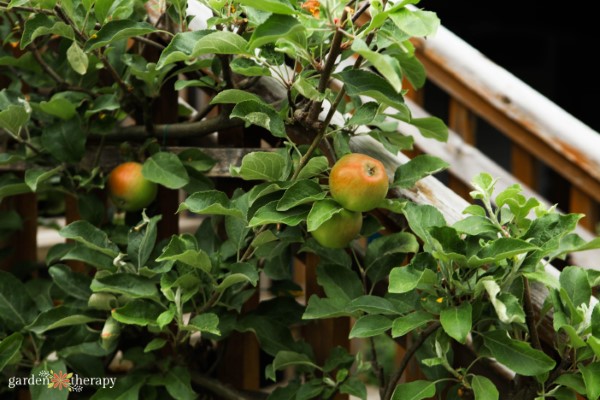
Some places have tackled this issue. For example, The Skookum Food Provisioners Cooperative in Powell River is a group that helps to save fruit in the community. People who have fruit and nut trees or shrubs on their property will reach out, and volunteers will come and pick the fruit. One-third of the picked fruit goes to the property owner, one-third goes to the picker themselves, and the other third is donated to charities to distribute the food to those in need.
Urban foraging has risen in popularity, partly due to climbing food prices and partly due to people like Alexis Nikole, the Black Forager. I see people gathering handfuls of chestnuts in the fall or eating ornamental plums. Sometimes, it isn’t until I see people foraging that I learn something is edible. It’s so interesting to see where food is growing!
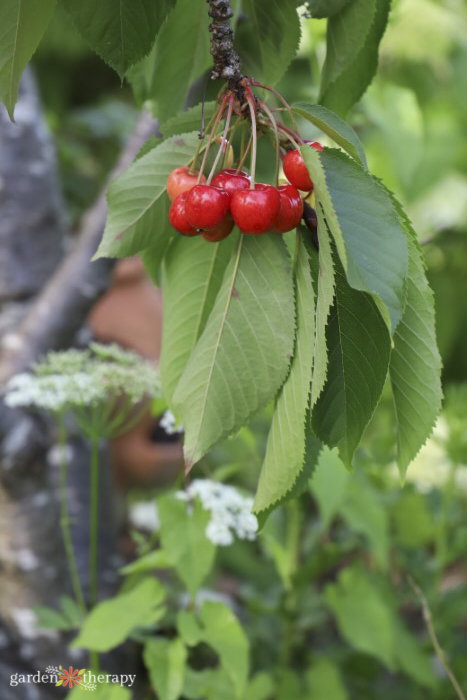
Community Gardens
Community gardens are amazing for urban gardeners with limited backyard gardening space or in rural and small towns where access to fresh produce may be limited. They’re a space that allows people to grow their own plots of food while also growing food for the community and helping one another with learning and maintenance.
In some cases, community gardens have waitlists, extra fees for joining, are difficult to reach, and are grown in non-ideal spaces.
For instance, in Vancouver, there is a waitlist of upwards of five years to get a plot at a community garden. It’s not as accessible as it sometimes is made out to be. But this demand for community gardening spaces shows that more and more people want to turn to the garden as a place of solace and to produce their own food.
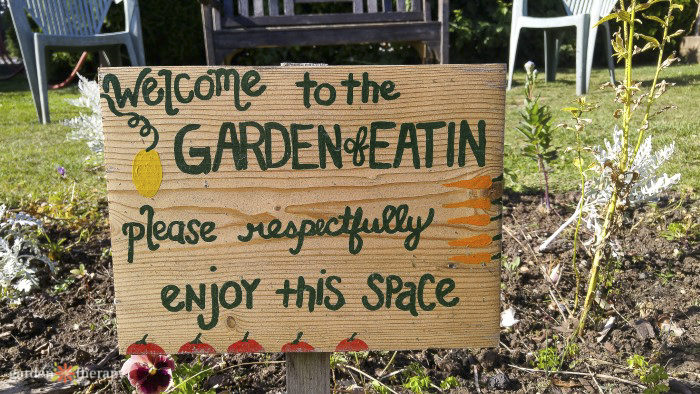
Community Sharing
Community sharing is something you see all the time. It can involve free seed libraries, urban farm stands, FB free groups, community fridges, donations to the food bank, and other neighbourhood share groups. Essentially, it’s any way you can share your excess with the community.
Community sharing is fairly easy to do, but the main concern is that there is limited monitoring of the food. All of the food in the grocery store goes through such rigorous standards. So when you do food sharing, just know there is an end-user risk that exists.
For community sharing, expired products can’t go to donation centres. But I’ve seen many people offer them online. I will happily take expired products. I’ve even gone and made expired coffee for soap making.
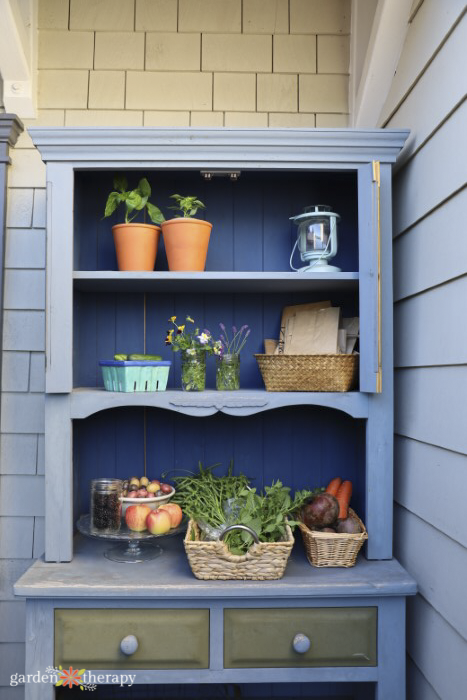
Community is Key
As you can see, the idea behind all of these initiatives is community. It’s about sharing spaces and food you may not use and allowing others to share in the bounty. I have always thought of gardening as a community, whether sharing knowledge with a neighbour or making your front yard an enjoyable stop for those on a walk. We’re all part of a greater community and ecosystem, and the more we contribute and accept that idea, the better for everyone.
